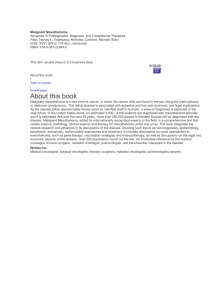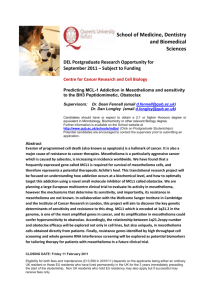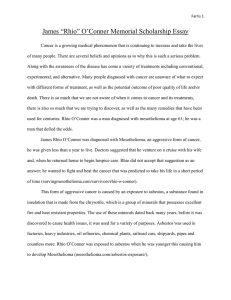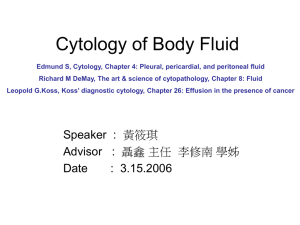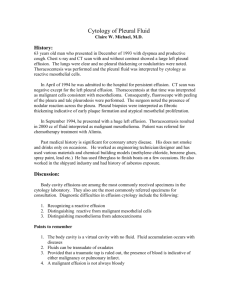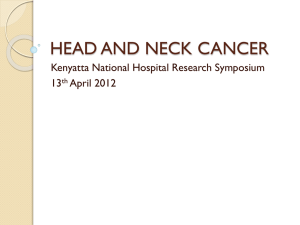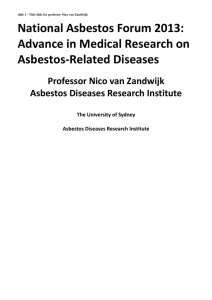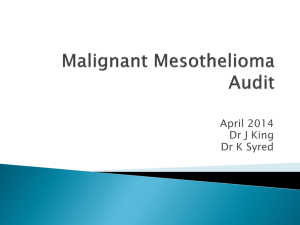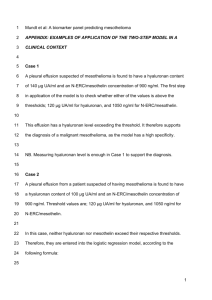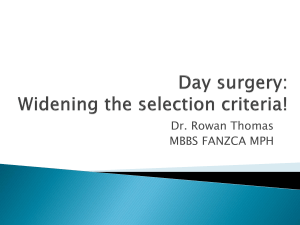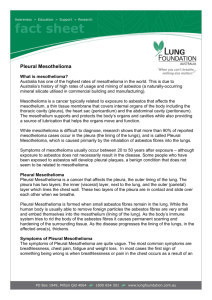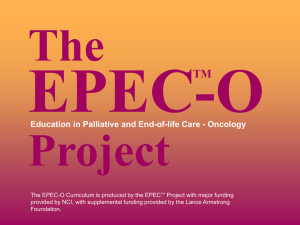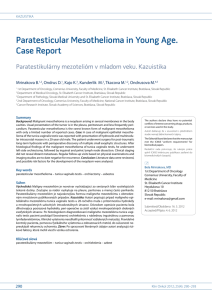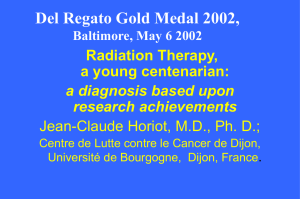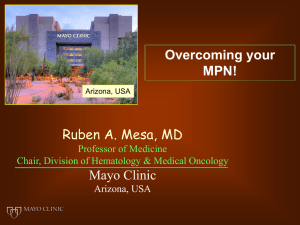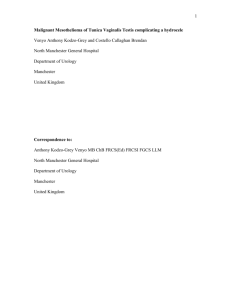A Survey of Quality of Life Following Surgery for Malignant Pleural
advertisement
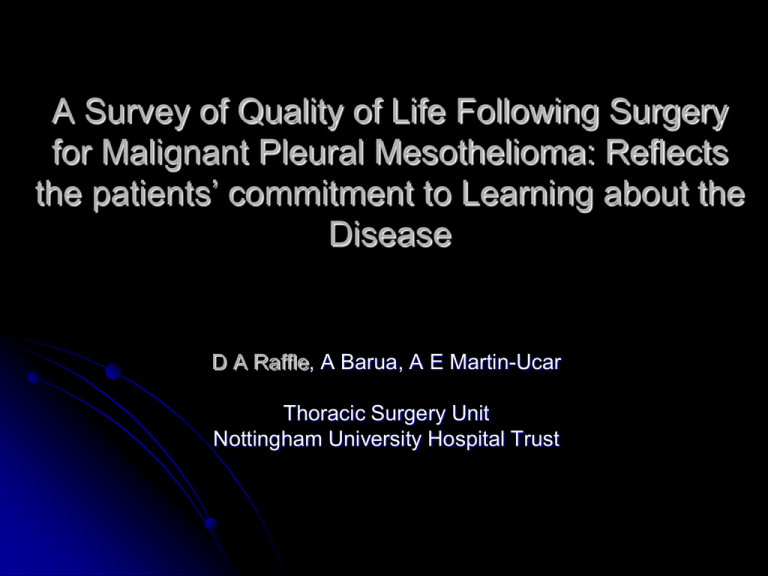
A Survey of Quality of Life Following Surgery for Malignant Pleural Mesothelioma: Reflects the patients’ commitment to Learning about the Disease D A Raffle, A Barua, A E Martin-Ucar Thoracic Surgery Unit Nottingham University Hospital Trust Overview Definition Indications for study Patients and Methods Results Questionnaires Discussion Health related Quality of life In 1948,the World Health Organisation (WHO) defined health as: “A state of complete physical, mental and social well-being, and not merely the absence of disease ”. World Health Organisation (WHO) 1948 Why do we measure Quality of Life in healthcare? The value of measuring quality of life has been increasingly recognised. It should identify and better describe the damaging effects of the disease or its treatment. Responses to quality of life questionnaires help health professionals to understand better the burden that a particular treatment can place upon patients’ as well as providing data to help others in the future. The consequences of treatment and treatmentrelated side effects may affect all of a patient's life, hence it is important to assess all aspects of a treatment's effects. Staniszewska, S. (1998) Indications for Study Published information on the effects on Quality of Life after surgical interventions for cancer But little after surgery for Malignant Pleural Mesothelioma. Main role of intervention is palliation and debulking Impact of disease and treatment must be part of discussion with patients and carers Indications for Study Increasing incidence of the disease and patients searching for treatments The appointment of a new Consultant Thoracic Surgeon with an interest in surgery for Malignant Pleural Mesothelioma. To provide information on post-surgery symptoms/Health related QoL for patients in the future . Methods The generic EORTC QLQ-30 & the lung specific QLQ-13 questionnaires where given to all patient with a known diagnosis of malignant pleural mesothelioma who opted for different forms of surgery as part of their treatment Patients were consented to receive the questionnaires, the first of which were filled in at the pre op assessment visit. The questionnaires were then posted to the patients at 6 weeks, 3,6,9 & 12 months (no reminders were sent). Data Sources European Organisation for the Research and Treatments of cancer’s generic Questionnaires: EORTC QLQ-C30 EORTC QLC-LC13 EORTC Study Group on Quality of life.(1994) Surgical and Department Databases EORTC QLQ-C30 Generic cancer questionnaire, includes: 1 global HRQoL scale 5 functional scales - role, social, emotional, physical, cognitive 3 general symptom scales - fatigue, pain, nausea 6 single item measures Statistical Analysis 3 stage process 1. Convert response into a numerical score 2. Transpose score to a 0-100 scale 3. Compare the scales at 3, 6, 12 and 24 months (more recently 6 weeks) (Fayers et al, 2001) Patients Between August 2009 & November 2010 questionnaires were given to: 22 patients (19 male 3 female) Median age 69 65% Epithelioid Procedures 3 3 19 16 VATS Debulking R1 Total Pleurectomy R2 TOTAL PREOPERATIVE 22 NO THORACIC SURGERY 0 TOTAL PREOPERATIVE 22 NO RESPONSE 0 DIED WITHIN 3 Months 2 DIED WITHIN 6 MONTHS 2 RESPONSE 100% 22 Comparing with other studies 100 100 90 80 70 77 79 Oesophageal Surgery Lung Surgery 60 50 40 30 Mesothelioma Surgery Functional Scales 100 90 80 70 60 50 40 30 20 10 0 Preoperative 3 Months 6 Months 9 months 12 months Conclusion The response rate reflects the commitment of patients with malignant pleural mesothelioma to help learning about the disease and treatments. The response rate is higher than previous similar studies performed in patients undergoing radical treatment for lung and oesophageal malignancies. Why? Mesothelioma patients more “militant”? Patients perceive interest and commitment Specialist Team? Early experience? Patients appreciate lack of information available to them References European Organisation for Research and Treatment of Cancer (EORTC) available @ www.eortc.be/ Staniszewska, S. (1998)Measuring quality of life in the evaluation of health care Nursing Standard 12: 17, 36-39 World Health Organisation (WHO) available@ www.who.int/library/collections/historical/en/index3.html
